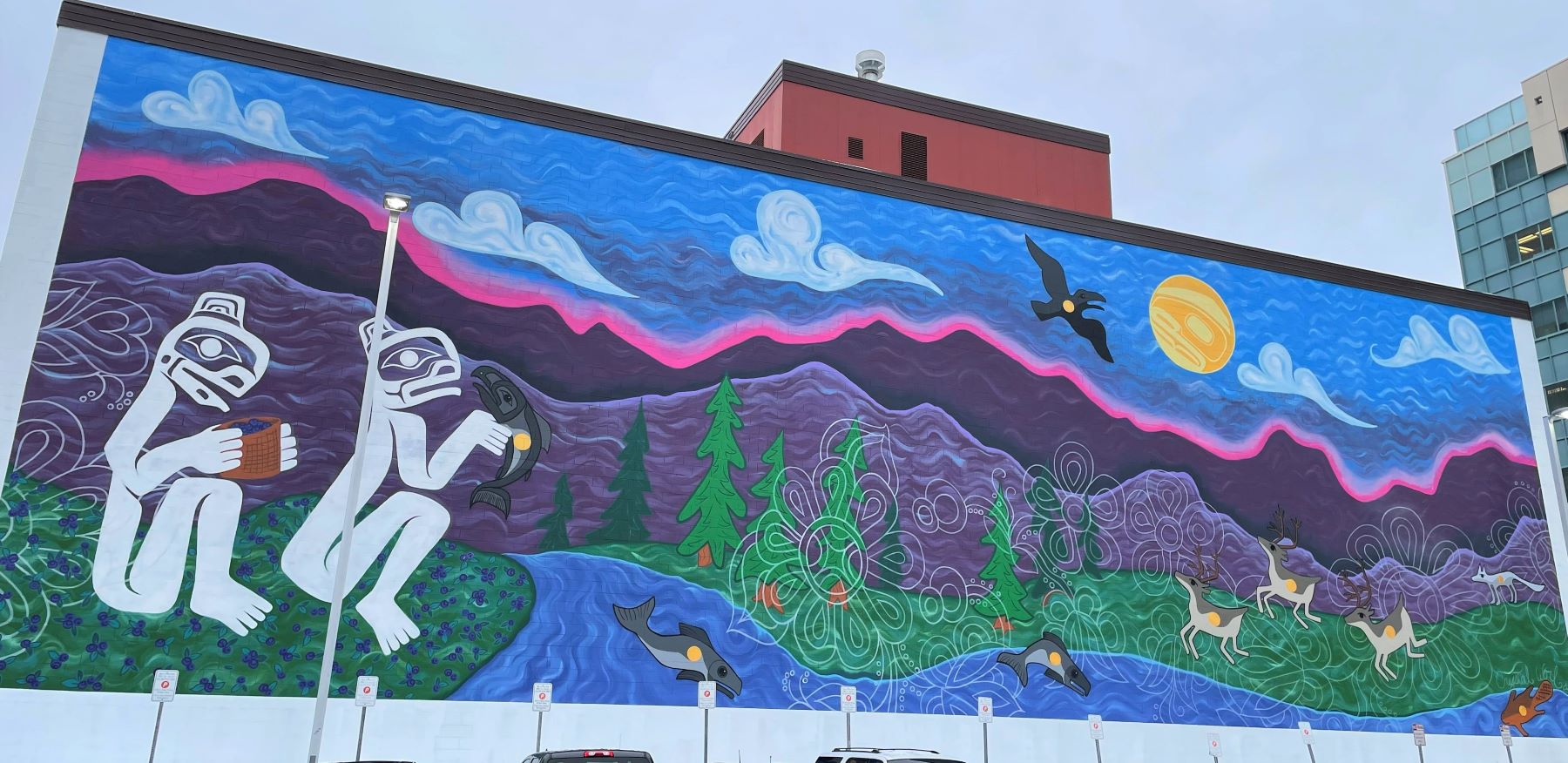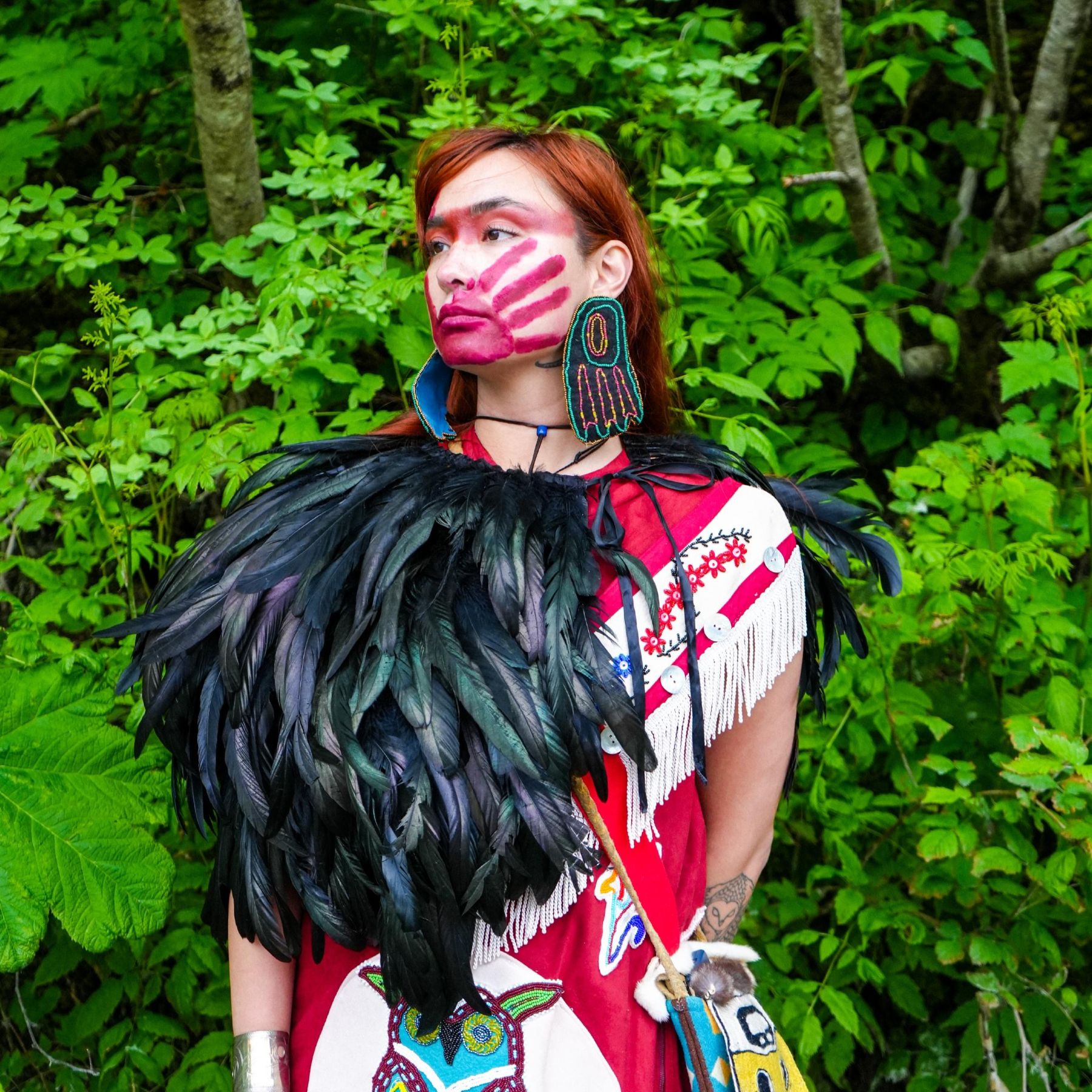Monumental Art: Monumental Stories
Alaska Native Artists Transforming Public Spaces
There is something profoundly humbling about being a human and gazing up at a monumental work of art created by another human's imagination. My earliest memories include gazing up at the beauty of our carved totem poles, our Kootéeyaa. I remember gazing up at them, my thoughts looking to translate our old forms for a story my young heart yearned to understand. In our traditions, the raising of a Kootéeyaa is not only an act of artistic creation but an act of healing for our communities. It is a reclamation of space, of history, of pride. Monumental art in history offers a powerful canvas for storytelling, cultural expression, and community healing in Alaska Native traditions. It connects us to something greater spanning over time and space.
Today, Indigenous Artists in Alaska are helping shape public art. Crystal Worl is one of these artists. As self-described: “She draws inspiration from her cultural roots and the natural world around her. Worl's artwork is diverse, ranging from Tlingit Northwest Coast design to contemporary multimedia pieces. Her work often explores themes of identity, connection to land, and the interplay between traditional and modern ways of life. In addition to creating art, Worl is also an advocate for Indigenous rights and works to promote cultural awareness and understanding through her art.”
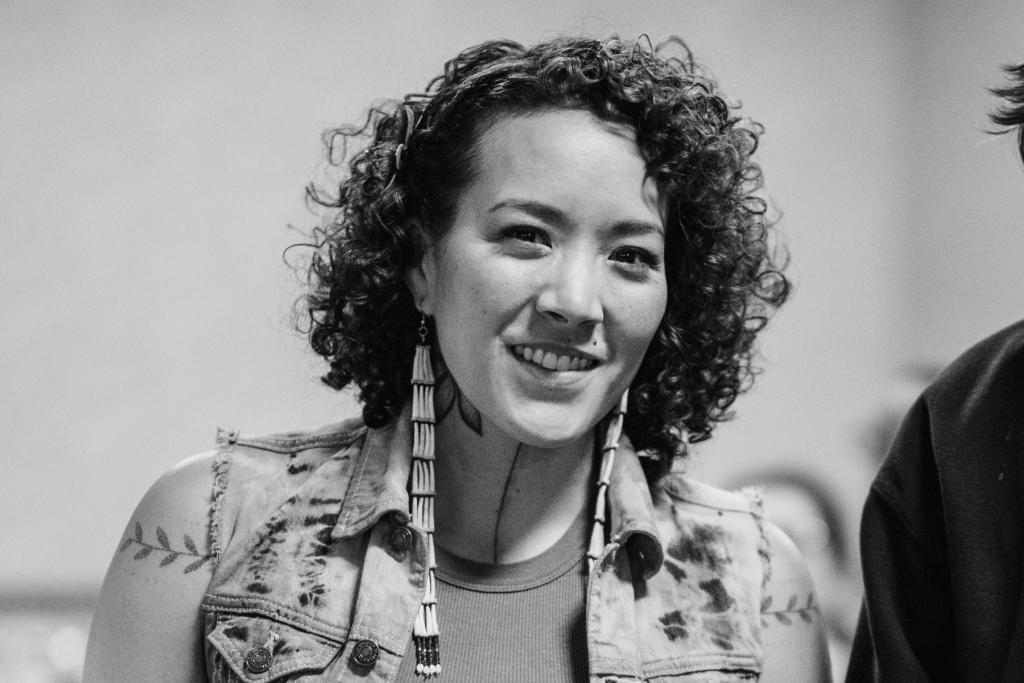
Crystal’s artistic style is uniquely hers, full of vibrant colors, florals that pay homage to her Athabsacan roots, and modern takes on Tlingit formline. In August 2022, artist Crystal Worl completed a mural on Dena'ina land in Anchorage, at the corner of G Street and 7th Avenue. The mural celebrates the rich diversity of Indigenous peoples across Alaska, highlighting shared connection and respect for the land. It features animal relatives integral to migratory cycles that sustain traditional subsistence lifestyles. A copy of the Anchorage mural can also be purchased as a print, and part of the proceeds support the Alaska Native Heritage Center. This November, I sat down with Crystal Worl to discuss cultural revitalization through monumental art. (*Any part of the conversation in Tlingit language has been translated to English*)

Can you share more about yourself?
My name is Crystal Worl. I am from the Raven moiety, Sockeye Clan, from the Raven House. I am Deg Hit’an Athabascan. I am a child of the Thunderbird clan. I like to design with Formline in a fun and fresh way…and I like to create monumental art.
Can you share more about the Anchorage Mural?
I was approached by the Alaska Mural project, which is built by the Anchorage Museum, the Anchorage Downtown Partnership, and APU, to work on a design that would represent Alaska Native people and all the diverse tribes that are living and thriving in Anchorage. I decided to create a design around the question: what is something that we all have in common? It's harvesting and subsistence. So when you look at the design, you'll see people that are together - picking berries and harvesting salmon. You'll see there's a design of animals that represents the migration of animals and the change of seasons that basically guides our lives and how we live it.
Why do you think it's important for Indigenous and Alaska Native art to be seen at this scale?
It is important to see Alaska Native art at this scale because people should know that we're here, that we've been here, and that we have plans to be here until…forever. We're modern people but we're still connected to our roots - where we come from and who we are. We're still connected to our ancestors. We have obligations to Future Generations and a lot of the pieces and stories that are told by Indigenous people are about taking care of the land, taking care of each other, and looking out for what's to come next. I think Society can learn a lot from that - especially now more than ever.
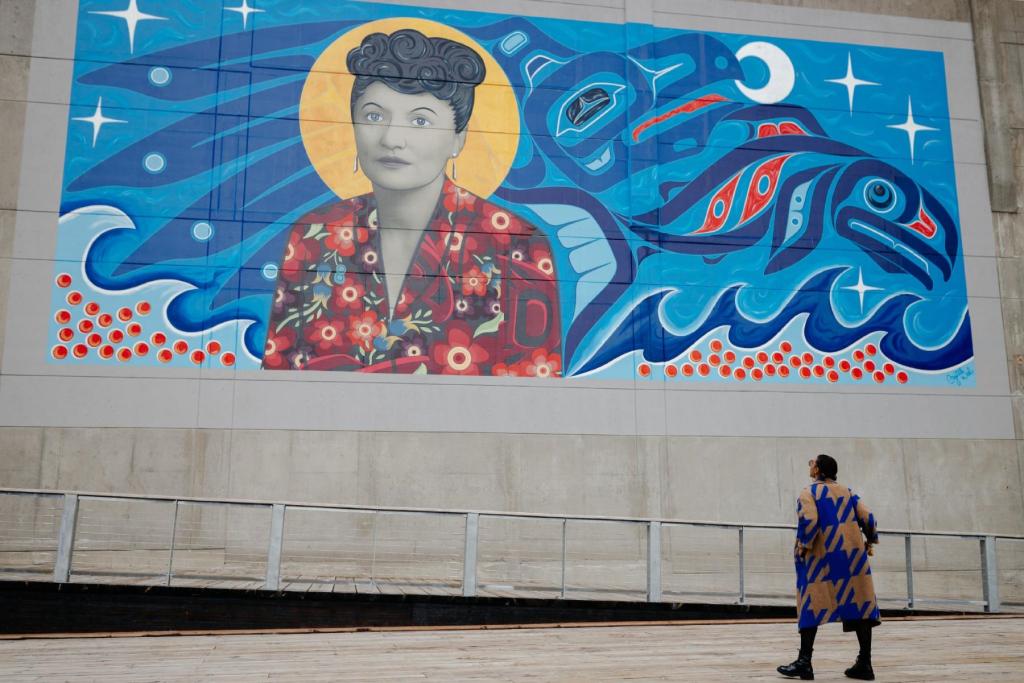
Indigenous-designed murals can also serve as calls to action, addressing liberation by asserting our visibility and artistic sovereignty. Worl has also designed and painted a mural in downtown Juneau honoring the impactful Alaska Native Civil Rights leader, Elizabeth Peratrovich. A remarkable monumental work of Alaska Native art to also note is the "Greatest Echo", two 40-foot panels on the Walter Soboleff Building of the Sealaska Heritage Instutute by acclaimed Haida master artist Robert Davidson in downtown Juneau. Nearby, bronze cast house posts by prominent Tlingit, Haida, and Tsmshian artists guard the building. Collectively, these works strengthen cultural identity, inspire new generations of artists, and build a more inclusive future. To stand before a work of monumental art—whether it is a Kootéeyaa or a grand mural - is to feel a shared humanity that transcends time. We are reminded of our own smallness, but also of our infinite capacity to create, to heal, and to leave behind legacies that endure.
View this Instagram Reel by author Maka Monture to learn more about Crystal Worl and her monumental artwork.
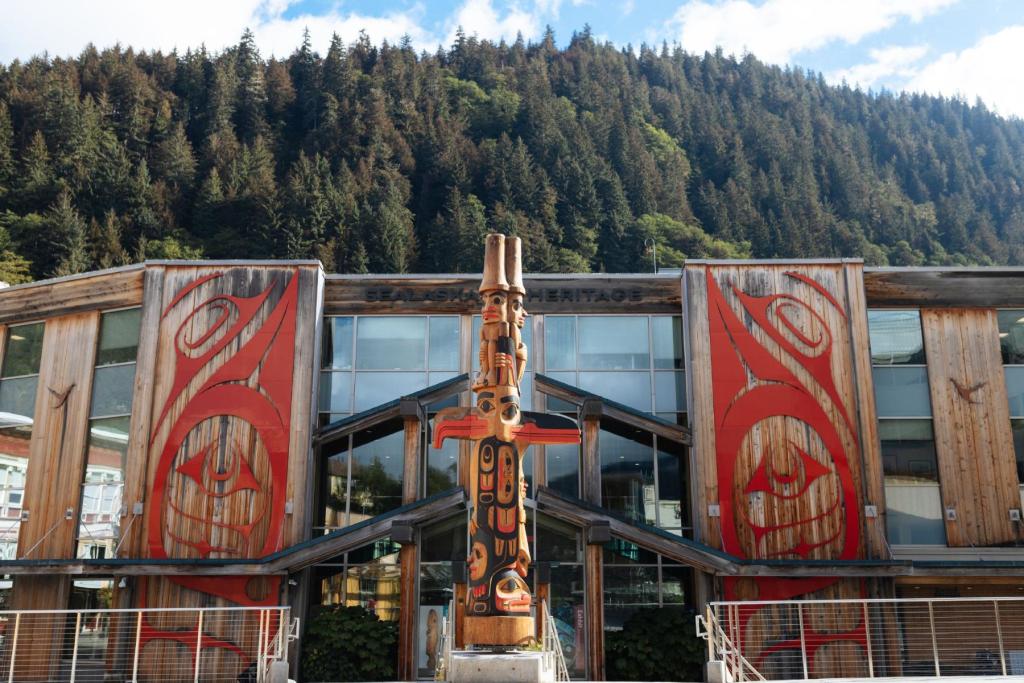

New! Alaska Native Culture Guide
Immerse yourself in Alaska Native heritage and learn how to experience the living culture of the state's Indigenous peoples.

